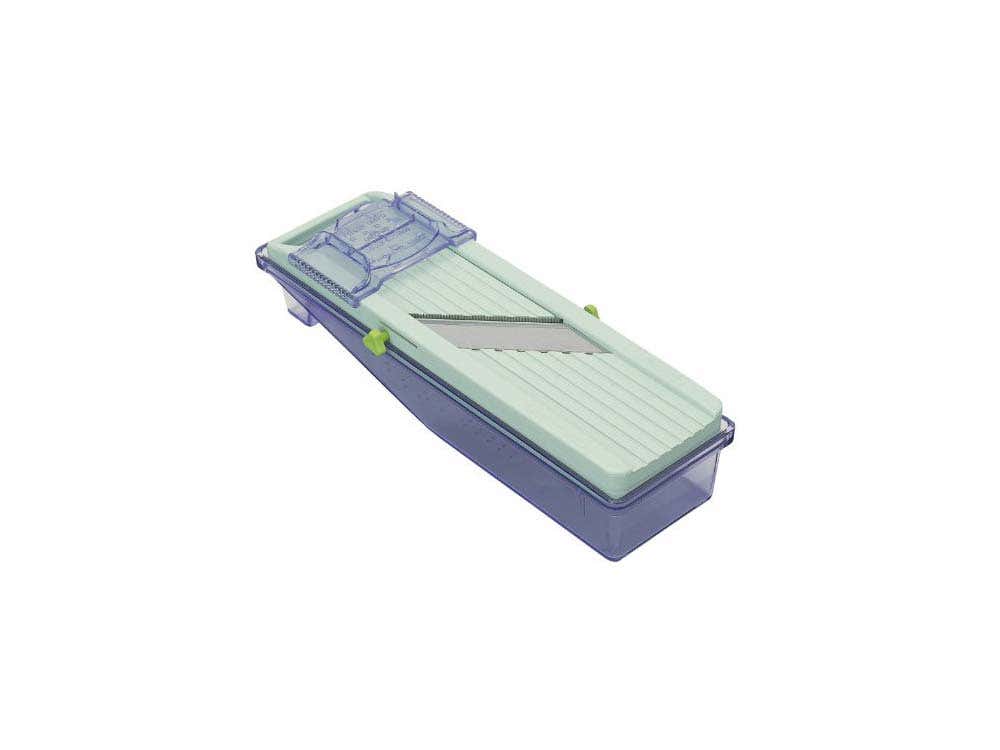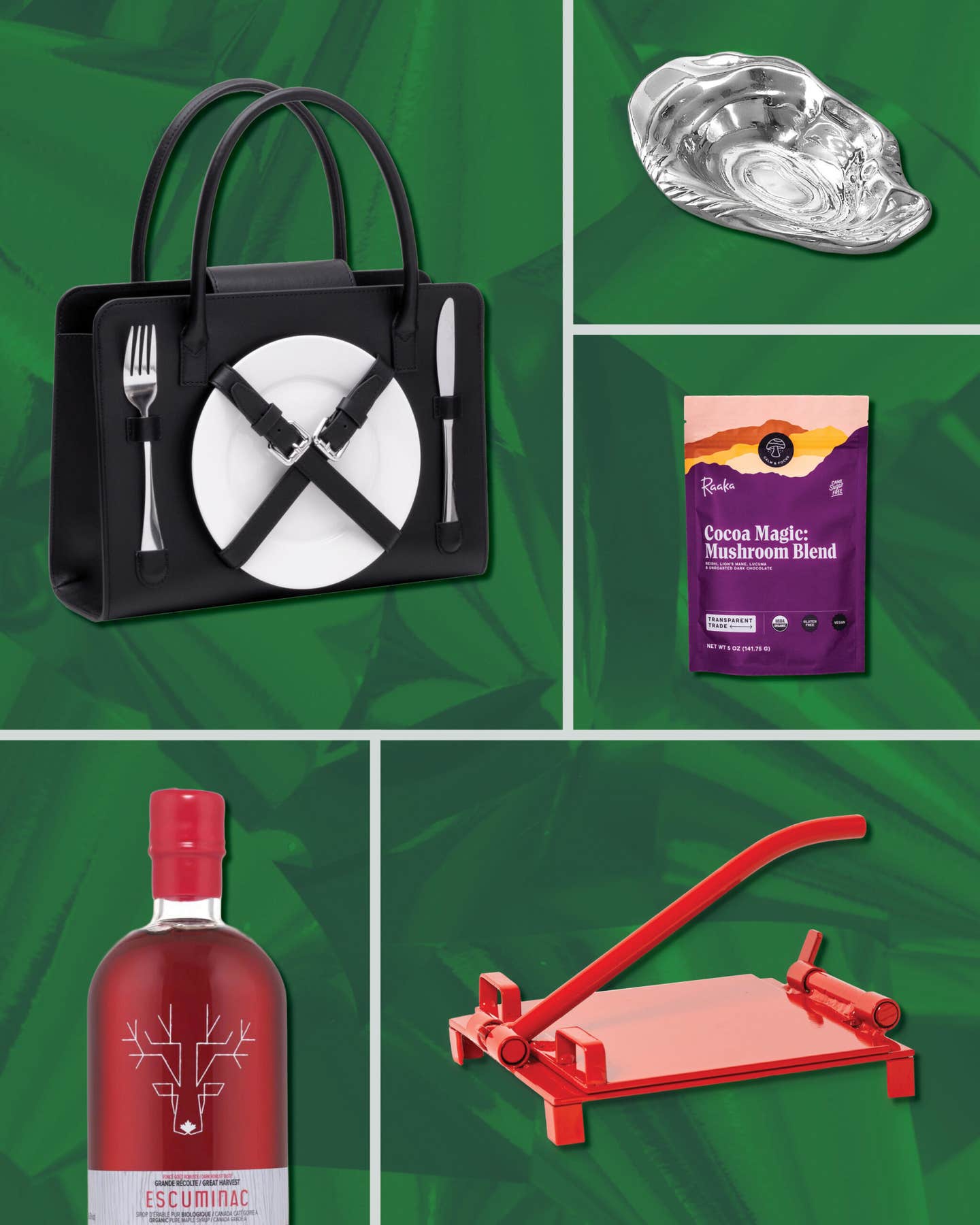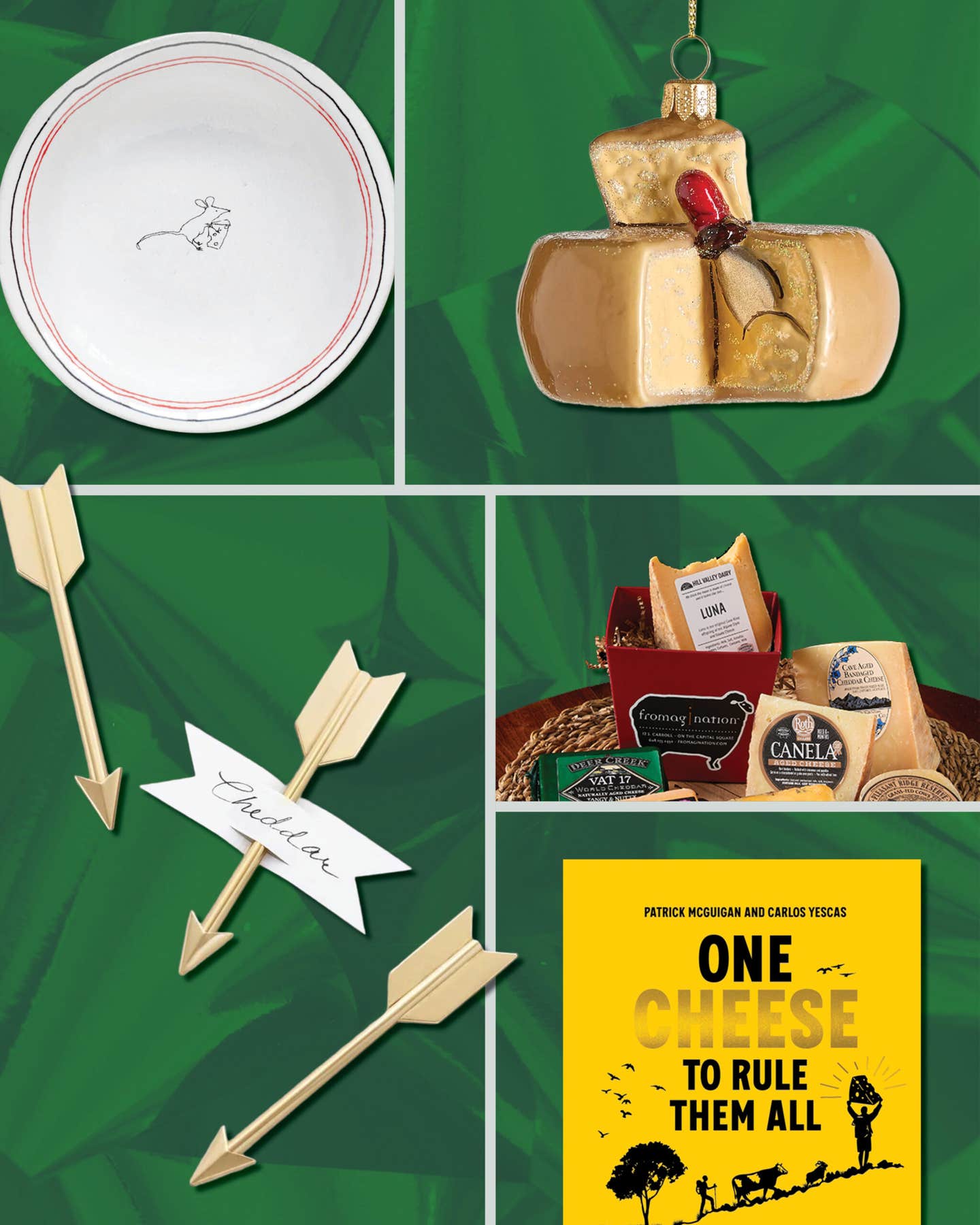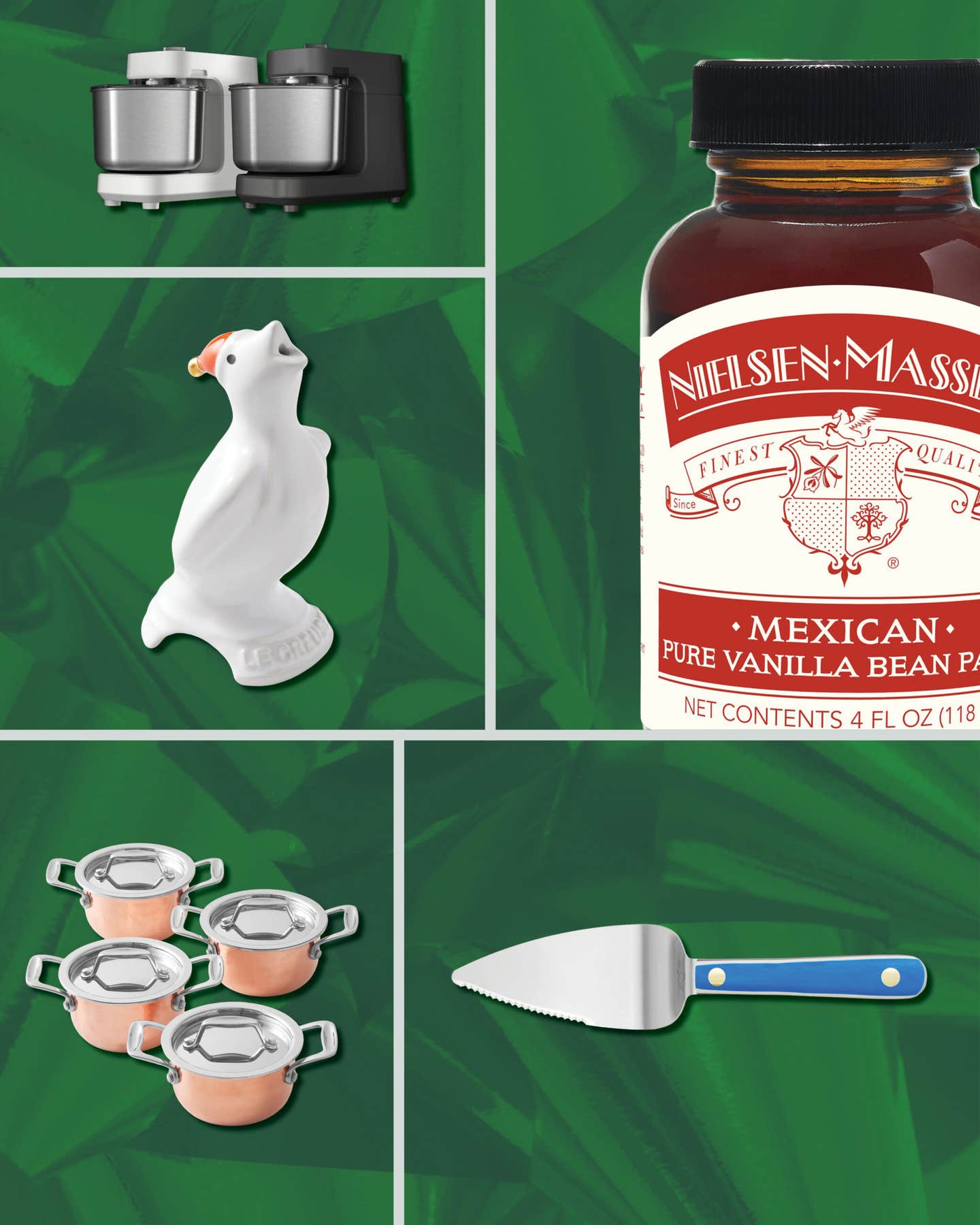Why a $20 Mandolin Can Change the Way You Cook
This restaurant essential can be tricky to handle, but is one of the best gadgets for your kitchen
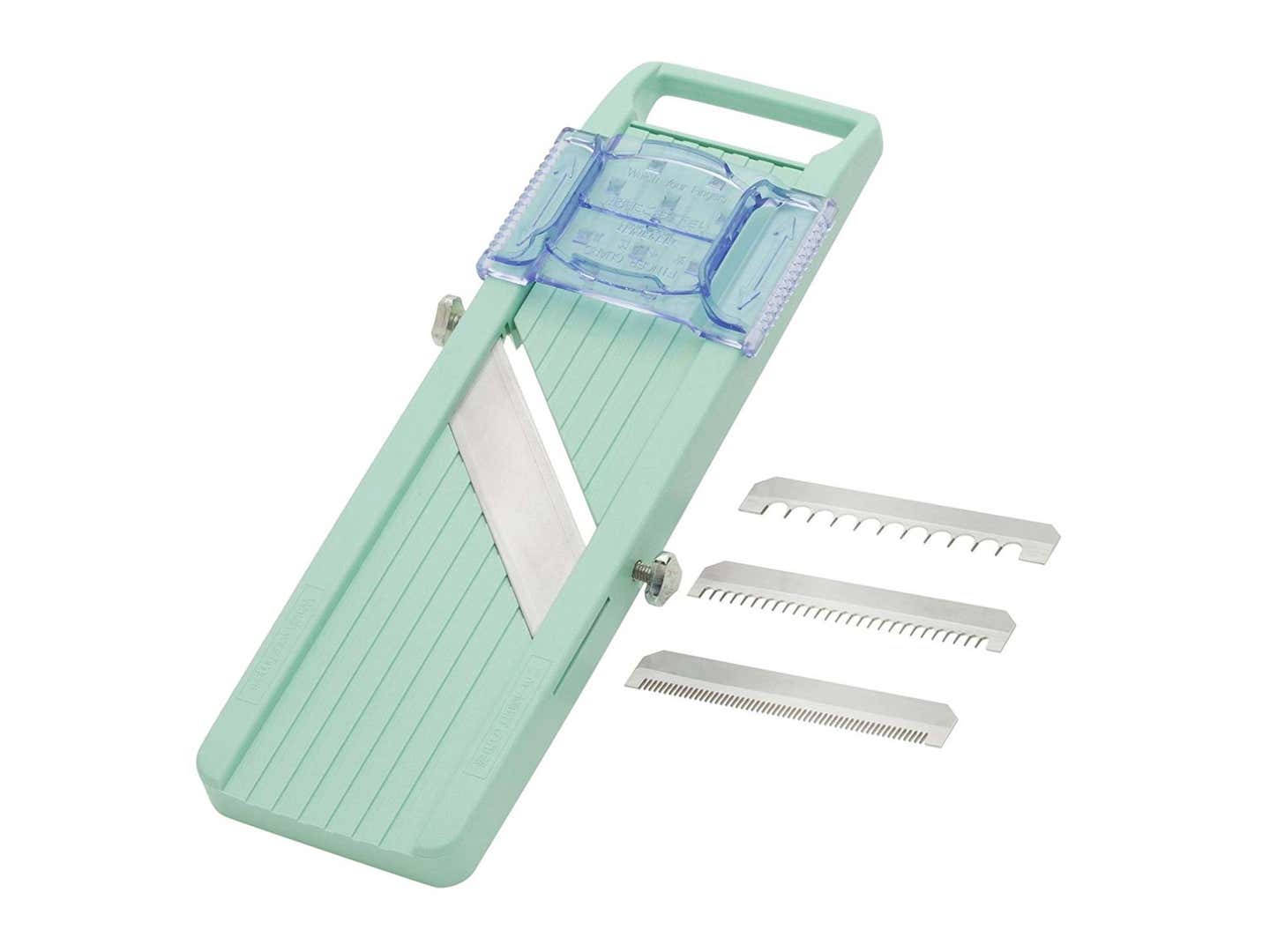
I won't show you the scar, but it's there: at the base of my right thumb, a neat half-inch-long oval patch of skin that went temporarily missing one night seven years ago. I was in a new relationship and eager to impress, and that meant a three-course dinner with razor-thin slices of fennel for a composed salad, and that meant it was time to haul out my Benriner.
If you've never cut your palm before, well, it bleeds a lot, and hurts about the same. But again: eager! So I quick-bandaged my wound with gauze and masking tape and got back to slicing, and maybe a drop of blood or two accidentally spilled into the bolognese, but dinner was a delight and we dated for a year. Even though my mandolin and I took a bit of a break.
Why am I telling you this story? Because six years after that relationship ended, my Benriner and I are still together. Like all great loves, mandoline can hurt you. But they're more than worth it.
The Fastest Route to Perfect Slicing
There's no substitute for good knife skills, but unless you put in serious training time, chances are a mandolin will slice faster than you, and with greater precision. That's important for salads with consistent textures and vegetables that cook at the same rate for even doneness. While I'd stick with a knife for one or two carrots, if I'm slicing a bunch, a mandolin's a major time saver that yields better results. I can get paper-thin slices of onions for salads that don't leave me with bitter onion breath and wispy shreds of cabbage that form fluffy clouds for sauerkraut. Remember that perfect technicolor ratatouille (actually a tian) from the film Ratatouille? A mandolin's the best way I know to make it happen.
Don't believe me? Ask a few line cooks in restaurants how they process mountains of vegetables during prep. A mandolin isn't suited to every task, but chances are most of those kitchens will have a few Bennies—slang for that Japanese Benriner brand—in the pantry.
That Actually Encourages You to Eat More Vegetables
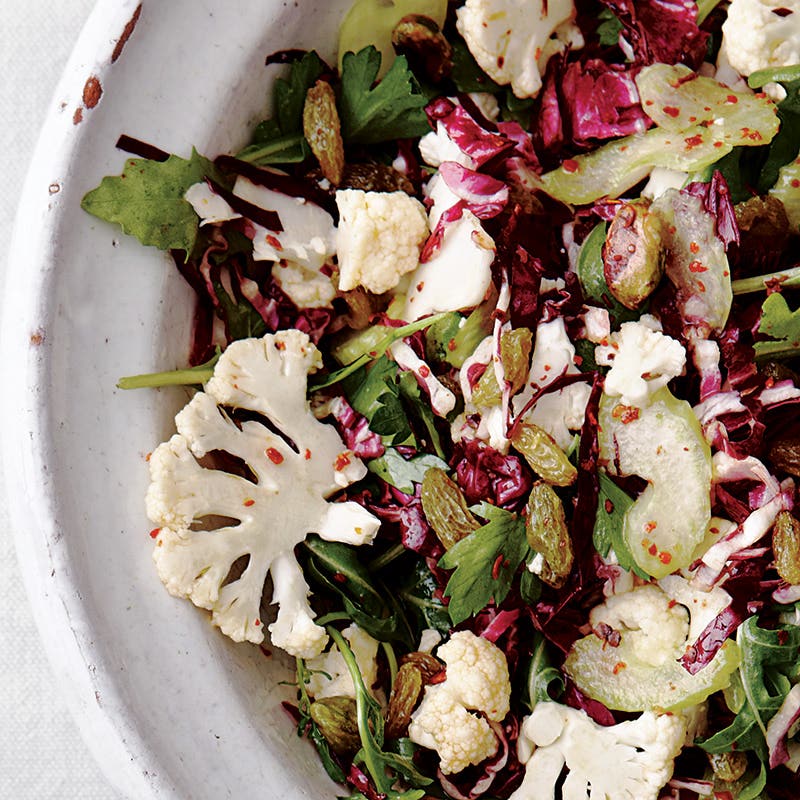
A common refrain about kitchen gadgets is how most of them amount to single-task clutter. Why buy a mandolin for slicing vegetables when you can just use the knife you already own? In my case at least, I've found my flat, easy-to-store, inexpensive model to be more than worth its $20 investment so many years ago. In large part because I find myself inventing reasons to use it.
Maybe it's my lizard brain that loves watching perfect constructions and deconstructions of things, but there's something particularly satisfying about using a mandolin to tackle a pile of produce, so much so that it encourages me to take on recipes that I wouldn't want to handle with just a knife. I find myself eating a lot more salads and slaws, especially ones that I can make primarily with a mandolin. Consider:
- Endive + radicchio + chevre + chopped dill
- Fennel + apple + raisins + walnuts + blue cheese
- Red + green cabbage + red onions + chives
- Daikon + carrot
- Zucchini + fresh mozzarella + pre-sliced prosciutto + olives
- Radish + cucumber + garlic + tahini
Add a simple salad dressing and you have a side dish ready to go in about 5 minutes.
For similar reasons, I'm throwing more vegetables onto homemade pizza, whipping up fast-cooking sautees and braises (since the slices are so thin), and making food that just feels a little fancier, thanks to restaurant-quality slicing. Of course your mileage may vary, a piece of plastic and steel won't turn you into a produce-consuming monster, but you might be surprised by how your habits change.
The Best Mandolin to Get
There's a reason restaurants (and I) are so set on Bennies: they're cheap, small, easy to use, and a great value. If you're willing to spend more money, there are more stable, higher quality mandolins out there with wider bases and sharper blades, but for most tasks a Benriner does just fine. The blade stays surprisingly sharp for surprisingly long, and since it's removable, you can sharpen it—a feature you won't find even on many expensive models. That removable blade and slim design also makes for easy cleaning.
Next to other comparably priced mandolins, Benriners offer more control. You adjust the thickness of a slice with a knob that gives you total flexibility over your cuts; other mandolins use an entirely fixed blade, or only offer a few pre-set thicknesses. The included shredding attachments (which come in three thicknesses)...don't exactly shred tough vegetables that well, but do an excellent job julienning vegetables like carrots. (Remember julienning, that tedious matchstick knife technique you never do? Well now you will.)
Again, I won't go so far as to say the Benriner's the best mandolin out there. But for its efficiency, control, surprising quality, and value, it should absolutely be your first.
As Long As You Use it Right
Which brings us back to my scar, a daily reminder that mandolins, for all their efficiency and charm, can be really freaking dangerous to use. Every mandolin instruction manual and online tutorial will tell you with great urgency to use your mandolin's included hand guard. In truth, almost no one does, and the Benriner's in particular is pretty much worthless. But there are a few ways to keep safe while slicing:
Slice fast, but controlled: You'll want to apply firm pressure down against the mandolin as you slice and work quickly, which helps keep slices even. But don't race through it—if you don't feel steady, slow down.
Vegetable firmness matters: You'll need to slice faster and firmer for hard vegetables like potatoes, whereas cucumbers and radishes work fine with gentler strokes. Moving too slow with firm vegetables will cause them to catch in the blade, which makes it easy for your fingers to slip. Do a few practice strokes to get your rhythm set, and accept that while a mandolin is good for many fruits and vegetables, some are just too firm (many squashes) or soft (most tomatoes) to mandolin safely.
Watch your fingers: An obvious point but worth mentioning: Don't look away while you're slicing! Keep your fingers curled up and out of the blade's reach, and keep your grip on the top of the produce.
And don't be afraid to ditch the nubs: If you find yourself working toward the bottom nubby part of a vegetable, save it to slice by hand. Onions are cheap; hand surgery is not. As with any relationship, you don't want to rely on your mandolin too much.
Keep Reading
Continue to Next Story
